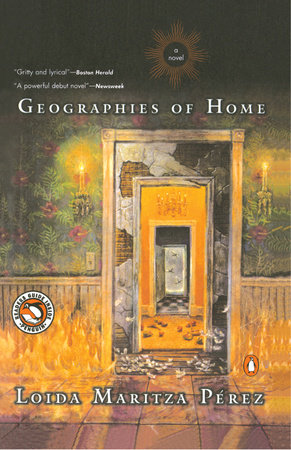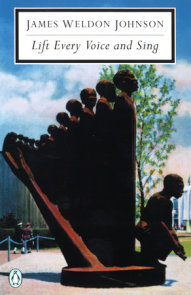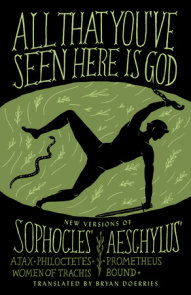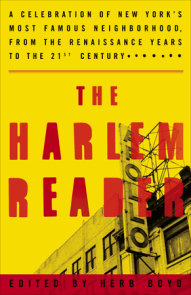READERS GUIDE
Questions and Topics for Discussion
INTRODUCTION
What does “home” mean to a family in a strange land, a place where voices speaking an unfamiliar language have so little resonance in the heart? How do immigrants reconcile time-honored traditions, customs, and beliefs with new expectations and responsibilities? How do their children negotiate their way between two contradicting cultures?
In Geographies of Home, Loida Maritza Pérez, a writer born in the Dominican Republic and raised in the United States, explores the definitions of home through the varying perceptions and memories of a large Latino immigrant family. Papito and Aurelia emigrate from the Dominican Republic, a country ruled by the dictator Trujillo and where “the horror of nightmares appeared full-blown in life.” For them, like millions of other immigrants, the United States beckons with the promise of escape from fear, poverty, and pain.
Settling with their fourteen children in a Brooklyn neighborhood indelibly marked by years of wear and neglect, they struggle to find a way to protect and nurture their family despite the profound sense of dislocation and alienation they feel and the poverty and racism that surround them. Papito, a Seventh-Day Adventist, clings to his devotion to God and the steadfast rules of his religion, unable to fathom what, other than faith, he can give his children. Aurelia, though she too is a practicing Adventist, retains a strong connection to the beliefs and rituals of her island past. Like her mother, Aurelia has the gift of second sight, the uncanny ability to see, shape, and change things. “It wasn’t as though she romanticized the past or believed that things had been better,” Pérez writes; “she had been poor even in the Dominican Republic, but something had flourished from within which had enabled her to greet each day rather than cringe from it in dread.” Powerless in the new world, unable to return to the old, Papito and Aurelia do the best they can. But fierce parental love and religious faith cannot block out the grim realities of everyday life. Most of their grown sons have distanced themselves from the family. Their daughter Marina descends into madness after she is brutally raped. Rebecca, trapped in an abusive marriage, lives in a filthy apartment filled with the chickens her husband raises, and alternately neglects and cherishes their three children. Iliana, the youngest daughter, has broken away to attend college in upstate New York. In high school, because of her dark complexion and her Latina accent, she had not fit comfortably in either ethnic group; but nothing had prepared Iliana for the vicious racial epithets she finds scrawled on her door at her elite, predominantly white college. Disillusioned and haunted by her mother’s disembodied voice recounting the family’s troubles, she submits to the pull of familial ties and returns to Brooklyn.
Pérez portrays an immigrant experience that few writers have chronicled and many readers might find unimaginable. In her graphic depiction of the troubles of one family, she exposes lives untouched by the promises of the American dream. Writing from the perspective of a generation brought up in America and seeking to reconnect with and understand their roots in places they know only through the stories of their parents, she explores how cultural heritage—including traditional rules of right and wrong and long-held assumptions about the roles of men and women in society—profoundly affect individual perceptions and expectations. As she delves into the contradictions faced by those caught between cultures and the superstitions, joys, and pains that bind families together, Pérez shows that survival ultimately depends on creating a home for oneself—”not a geographical site but . . . a frame of mind able to accommodate any place as home.”
ABOUT LOIDA MARITZA PÉREZ
Loida Maritza Pérez was born in the Dominican Republic in 1963. She lives in New York City.
A CONVERSATION WITH LOIDA MARITZA PÉREZ
What inspired you to write Geographies of Home?
While walking through streets in Brooklyn, Queens, the Bronx and even Manhattan, I have on occasion heard roosters crowing in neighborhoods where I knew for a fact there were no livestock markets. This started me thinking. Where were these sounds coming from? Were residents keeping hens and roosters in their homes? For what purpose?
Geographies of Home was originally conceived as a short story consisting of what is now chapter 8. Yet once I began to imagine Rebecca’s life, other questions presented themselves. What had been her circumstances prior to marrying Pasión? Why had she stayed with him after the abuse began? What were her parents like? Did she have any siblings? Were their lives similar to hers? What was their ethnic, cultural, religious, social, and economic background? How did this background influence their lives and affect their perceptions? What compromises had they made in their lives and why? Once I began to explore these questions, the characters took on a life of their own and the story evolved into a novel.
In what ways are the family you describe and the problems they confront typical of the Dominican experience in this country?
There is no “typical experience” either for Dominicans living in this country or for those remaining in the Dominican Republic, just as there is none for Americans who have lived in the United States since their ancestors arrived on the Mayflower. We live our lives in a myriad different ways. Therefore, when I set out to write Geographies of Home, I had no intention of writing a definitive text of any sort. Instead, my intention was to write a narrative wherein I explore the lives of a particular family of specific means living under specific circumstances. Any attempt to do otherwise would have resulted in stereotypes. This stated, I nonetheless believe that—regardless of the possibly unique circumstances presented in Geographies—Dominicans and other Latinos will encounter familiar issues. But are these issues specifically Latino? I don’t think so. Ultimately, these issues pertain to the human condition: our need to belong and be accepted; the contradictions inherent in all of us; our attempts to do the best we can even in the worst of circumstances; our desire to guide our children and the risk of making mistakes along the way; our wondrous ability to sometimes understand and forgive; and our faith in a force greater than ourselves.
Initially, Geographies of Home seems to be about Iliana, yet by the end readers are fully engaged in the lives of Marina, Rebecca, and both parents. How did you decide which family members to focus on?
A family is an ever-shifting unit. Members marry, move away, remain involved to varying degrees. In Geographies of Home I focused on the members crucial to the story. These—with the exception of Rebecca, who, because of circumstances, often winds up at her parents’ house—are those living under the same roof as Aurelia and Papito. Together, they are the force throughout the novel, appearing as early as in the prologue and as late as in the last chapter. However, my intent was to defy convention by granting an authoritative voice to each of the novel’s characters, meaning that I didn’t want one to be perceived as more legitimate than another. Geographies of Home is about a family, not specifically about any one of its members. Had I intended that Iliana be the protagonist, I would have written the entire novel from her perspective. Although writing in English, I also intended that the format of the novel reflect the Spanish language. English is one of the few languages, if not the only one, in which “I” is always capitalized as opposed to “you,” “she,” “he,” or “they,” meaning that “I” automatically has dominance over others. The format of the novel is meant to do away with this bias.
The Seventh-Day Adventist religion plays a significant role in the lives of the family in Geographies of Home. Why did you choose this particular religious tradition?
Because Latinos are usually portrayed as Catholic, I wanted to delve into one of the Protestant and increasingly proselytized religions such as that of Jehovah’s Witnesses, Seventh-Day Adventist,— Mormonism, Pentecostalism, or whatever. Choosing the most restrictive of these religions enabled me to provide more of a contrast with alternate forms of spirituality and folk religions.
In your book, elements of magic and the surreal are mixed in with powerful descriptions of life’s harsh realities. Why were these elements essential to the story you wanted to tell?
These elements were essential because in the novel, as in life itself, which is surreal, I wanted both the magic and the mundane to coexist. Because I wholeheartedly accept that the soul is capable of much more than science can measure. Because I don’t subscribe to the notion that life is linear or inherently logical. But to answer the question more precisely, I pitted these elements against each other because I wanted to explore issues of perception, madness, and reality while illustrating that none of these is easily definable. Because I wanted the act of reading to be as disconcerting as life is for the characters—meaning that I wanted readers to recognize reality as an ever-shifting thing.
Geographies of Home is much darker than many other contemporary novels about the immigrant experience. Do you think your depiction is a more realistic one?
To say that I think my depiction is a more realistic one is to concede that there is a primary way in which immigrants live their lives.
What writers or books have had the greatest impact on you?
The book that has had the greatest impact is the Bible for its inherent contradictions and fascinating tales. As for authors, a very brief list would include James Baldwin, Virginia Woolf, Toni Morrison, Gabriel García Márquez, Edgar Allan Poe, Zora Neal Hurston, and Jorge Luis Borges.
How old were you when you left the Dominican Republic? Have you traveled there as an adult?
I was quite young when I moved to the United States. As for the second question, yes, I have traveled to the Dominican Republic as an adult and will be doing so much more often considering that I am basing my second novel there.
DISCUSSION QUESTIONS






















